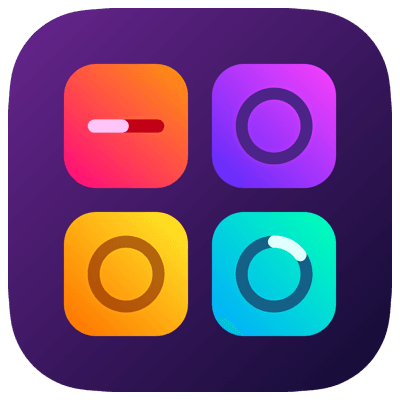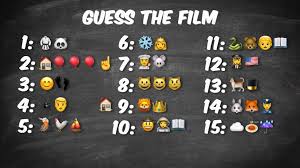Emoji Quiz
In the digital age, where communication often relies on visual symbols, the Emoji Quiz game has emerged as a delightful and engaging pastime that blends creativity, pop culture, and puzzle-solving. This mobile and online game challenges players to decode sequences of emojis to guess words, phrases, or concepts, tapping into the universal language of emojis. With its accessibility, vibrant design, and broad appeal, the Emoji Quiz has become a favorite for casual gamers, families, and classrooms alike. This article explores the origins, mechanics, cultural significance, and educational value of the Emoji Quiz, highlighting why it remains a captivating phenomenon.

Origins and Evolution
The Emoji Quiz game rose to prominence in the early 2010s, riding the wave of emoji popularity as smartphones and messaging apps integrated these colorful icons into daily communication. Inspired by classic word games like charades and Pictionary, the Emoji Quiz adapted the concept for the digital era, using emojis to represent ideas in a visually intuitive way. Early mobile apps like Emoji Quiz by Mediaflex Games (2014) and Guess the Emoji by Random Logic Games set the template, offering hundreds of levels with increasing complexity. These apps capitalized on the growing familiarity with emojis, which were standardized by Unicode in 2010 and became ubiquitous across platforms like iOS and Android.
Over time, the Emoji Quiz evolved to include themed versions, such as movie titles, song lyrics, or brand names, reflecting pop culture trends. Developers introduced multiplayer modes, daily challenges, and social sharing features, enhancing engagement. Web-based versions, like those on CrazyGames or Poki, made the game accessible without downloads, while platforms like Roblox integrated Emoji Quiz minigames into user-created worlds. Today, the game spans mobile apps, websites, and even physical adaptations, like emoji-themed board games, cementing its place in modern gaming culture.
How the Emoji Quiz Works
The Emoji Quiz is a puzzle game where players decipher a sequence of emojis to guess a word, phrase, or concept. For example, a crown and a lion might represent “The Lion King,” while a pizza and a heart could mean “pizza lover.” The game typically features:
- Levels and Progression: Most versions, like Emoji Quiz on Android, offer hundreds of levels, starting with simple two-emoji combinations (e.g., 🐝🍯 for “beehive”) and advancing to complex phrases (e.g., 🎤🌟 for “pop star”). Players unlock new levels by solving puzzles correctly.
- Gameplay Mechanics: Players view a set of emojis and type their guess into a text box or select from multiple-choice options. Hints, such as revealing a letter or removing incorrect options, are available via in-game currency or ads.
- Variations: Some versions focus on specific themes, like movies (Emoji Pop), food, or brands. Others, like Emoji Puzzle on Poki, incorporate matching or memory elements, where players pair emojis with phrases.
- Multiplayer and Social Features: Apps like Guess the Emoji allow players to compete with friends or share puzzles on social media, fostering community interaction.
The game’s interface is user-friendly, with colorful emoji displays and intuitive controls, making it accessible to players as young as six. Free-to-play models, often with in-app purchases for hints or ad-free play, ensure broad accessibility, though some apps face criticism for excessive ads.
Why the Emoji Quiz Captivates
The Emoji Quiz thrives on its universal appeal and engaging mechanics. Emojis are a global language, transcending linguistic barriers, which makes the game accessible to diverse audiences. Its simplicity—requiring only a device and basic emoji knowledge—lowers the entry barrier, while its escalating difficulty keeps players hooked. For instance, decoding 🦁👑 is intuitive, but unraveling 🐍✈️ for “Snakes on a Plane” challenges even seasoned players.
The game’s connection to pop culture adds to its allure. Puzzles referencing movies, songs, or celebrities resonate with players familiar with media trends, while general knowledge puzzles (e.g., 🐘🌍 for “African elephant”) appeal to all ages. The Emoji Quiz also taps into the human love for pattern recognition and wordplay, offering a satisfying “aha” moment when a puzzle clicks.
Social features enhance its appeal. Players can challenge friends or share tricky puzzles on platforms like Instagram, creating a communal experience. The game’s portability—playable on phones, tablets, or browsers—makes it ideal for quick sessions during commutes or breaks. Its vibrant visuals and playful sound effects further elevate the experience, making each solved puzzle feel rewarding.
Educational and Cognitive Benefits
The Emoji Quiz offers more than entertainment; it’s a valuable educational tool. For children, it fosters literacy skills by encouraging word recognition and spelling. Decoding emoji sequences builds critical thinking and problem-solving, as players must interpret abstract connections (e.g., 🔥🏠 for “house fire”). The game also enhances visual literacy, teaching players to interpret symbols in context—a skill increasingly relevant in digital communication.
In classrooms, teachers use Emoji Quiz-style activities to engage students in creative writing or vocabulary lessons. For example, students might create their own emoji puzzles, promoting collaboration and imagination. The game also supports cultural awareness, as emojis often reflect global symbols or traditions, prompting discussions about meaning across cultures.
For adults, the Emoji Quiz sharpens cognitive flexibility, requiring players to switch between literal and metaphorical interpretations. It also serves as a low-stakes mental exercise, reducing stress while keeping the brain active. Multilingual versions, available in apps like Emoji Quiz on Google Play, aid language learning by pairing emojis with words in different languages.
Cultural Impact and Community
The Emoji Quiz has left a mark on digital culture, reflecting the rise of emojis as a communication staple. Online communities on Reddit and Fandom share strategies and fan-made puzzles, while posts on X highlight its popularity, with users praising its nostalgic charm or challenging levels. Educational platforms, like Scholastic, incorporate Emoji Quiz activities to teach media literacy, underscoring its versatility.
The game’s influence extends to pop culture, with brands using emoji-based quizzes in marketing campaigns to engage audiences. Its presence in Roblox worlds and browser games like those on Coolmath Games shows its adaptability across platforms. However, some players note drawbacks, such as repetitive puzzles or ad-heavy apps, though premium versions mitigate these issues.

Conclusion
The Emoji Quiz game is a vibrant celebration of emojis, wordplay, and creativity. Its simple yet addictive mechanics, cultural relevance, and educational value make it a standout in casual gaming. Whether decoding a movie title or crafting a custom puzzle, players find joy in unraveling the visual language of emojis. As emojis continue to shape communication, the Emoji Quiz remains a timeless bridge between fun and learning, inviting players of all ages to guess, laugh, and connect in a colorful digital world.